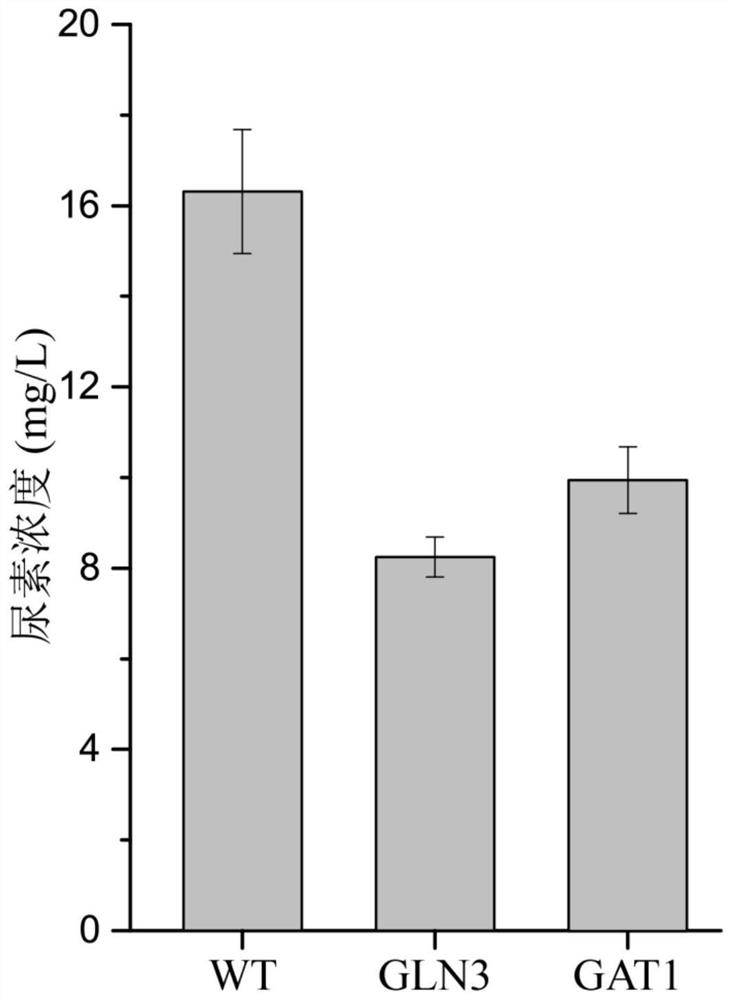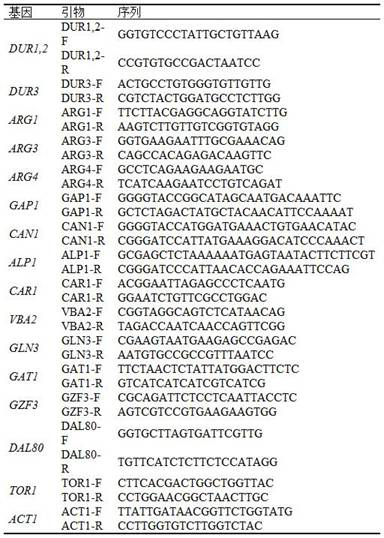A method of regulating transcriptional activators to reduce urea accumulation in rice wine yeast
A technology of transcription activator and rice wine yeast, applied in the field of genetic engineering, can solve the problems affecting the safety of rice wine products, etc., and achieve the effect of important industrial application prospects.
- Summary
- Abstract
- Description
- Claims
- Application Information
AI Technical Summary
Problems solved by technology
Method used
Image
Examples
Embodiment 1
[0029] Example 1 The construction of rice wine yeast suitable for rapamycin-mediated regulatory protein subcellular localization
[0030] (1) Splitting the diploid Saccharomyces cerevisiae strain XZ-11 used for rice wine production to obtain a haploid strain
[0031] According to the paper "Wu D H, Li X M, Shen C, et al. Isolation of a haploid from anindustrial Chinese rice wine yeast for metabolic engineering manipulation[J]. Journal of the Institute of Brewing, 2013, 119(4): 288-293 The method and steps described in the method and steps to obtain the haploid XZ-11a strain without resistance gene.
[0032] (2) Construction of auxotrophic haploid rice wine yeast JNZ01
[0033] Using the genome of rice wine yeast XZ-11 strain as a template, amplify separately URA3 The 300 bp sequence of the upstream and downstream of the gene is obtained by fusing the above two amplified fragments by fusion PCR URA3 Gene knockout box. Will URA3 Transform the XZ-11a strain with the knock...
Embodiment 2
[0042] Example 2 Fusion PCR to construct fusion expression GLN3 , FKBP12 and GAT1 , FKBP12 recombination box
[0043] (GGGGS) was first transformed by whole-plasmid PCR 3 The linker was introduced into the high copy plasmid vector pRS426-TEF-URA3 Bam After the HI site, pRS426-TEF-GS-URA3 was obtained. The FKBP12 protein with four SV40 nuclear localization sequences fused at the N-terminus was obtained by gene synthesis, and cloned into the vector pRS426-TEF-GS-URA3 by restriction enzyme digestion Eco R I and xho I site, pRS426-TEF-GS-SV40-FKBP12-URA3 was obtained. amplified from the genome GLN3 with GAT1 The 500 bp sequence without a stop codon at the end was cloned into the vector pRS426-TEF-GS-SV40-FKBP12-URA3 by enzyme digestion and ligation respectively. Speech I and Bam H I site, pRS426-TEF-Gln3D-GS-SV40-FKBP12-URA3 and pRS426-TEF-Gat1D-GS-SV40-FKBP12-URA3 were obtained. Then use the obtained plasmid as a template to carry out PCR amplification by i...
Embodiment 3
[0046] Example 3 Elimination of CRISPR-Cas9 system plasmids
[0047] The positive transformants obtained by screening were subcultured in YPD medium (yeast extract 10g / L, peptone 20g / L, glucose 20g / L), and were transferred to fresh YPD culture with 10% inoculum after every 24 hours of cultivation. Base. At the same time of each transfer, the 5-FOA and 5-FAA plates (YNB 1.7 g / L, ammonium sulfate 5 g / L, glucose 20 g / L, uracil 25 mg / L, tryptophan 25 mg / L, 5- FOA 1 g / L, 5-FAA 1 g / L, agar powder 20 g / L) were streaked until transformants were obtained on 5-FOA and 5-FAA plates. It was verified by colony PCR that p426-Gln3sgRNA, p426-Gat1sgRNA and p414-TEF1p-Cas9-CYC1t had been eliminated in the transformant, and recombinant rice wine yeast JNZ02 (MATa, Δura3 , Δtrp1 , TOR1 S1972R, Δfpr1 , GLN3 ::FKBP12) and JNZ03 (MATa, Δura3 , Δtrp1 , TOR1 S1972R, Δfpr1 , GAT1 ::FKBP12).
PUM
 Login to View More
Login to View More Abstract
Description
Claims
Application Information
 Login to View More
Login to View More - R&D
- Intellectual Property
- Life Sciences
- Materials
- Tech Scout
- Unparalleled Data Quality
- Higher Quality Content
- 60% Fewer Hallucinations
Browse by: Latest US Patents, China's latest patents, Technical Efficacy Thesaurus, Application Domain, Technology Topic, Popular Technical Reports.
© 2025 PatSnap. All rights reserved.Legal|Privacy policy|Modern Slavery Act Transparency Statement|Sitemap|About US| Contact US: help@patsnap.com



